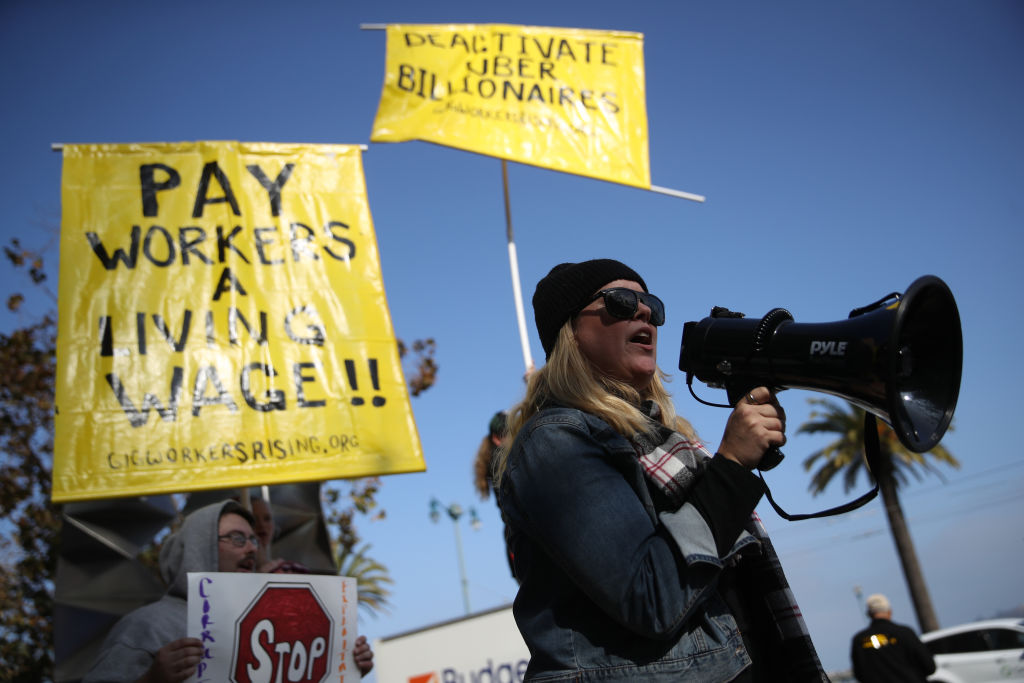‘Inflection point’: Economic fears mount as Trump tariffs are snarled in court.
The fear is that Trump will bristle at both adverse court rulings and perceptions on Wall Street that he’s ready to bail on his protectionist agenda.
With President Donald Trump’s tariffs entangled in the courts, industry leaders are warning that continued confusion over his trade agenda could drag down an economy that was already in danger of slumping.
They are urging Trump to abandon an aggressive policy that has been marked by chaos and reversals, and instead focus on delivering tangible, lasting deals that will allow businesses to plan ahead. A federal court on Wednesday froze the tariffs, but an appeals court on Thursday reinstated them for now, only fueling the sense of disarray.
“One of the things that the administration has to offer is a guarantee of certainty with respect to current and potential future tariffs,” National Foreign Trade Council President Jake Colvin, who advocates for U.S. companies on global commerce, said after the Wednesday decision by a trade court. “The court’s ruling… is an inflection point that provides an opportunity for the administration to turn even more towards deal-making.”
The potential policy blowup comes at an especially vulnerable time for the economy. The Conference Board reported Thursday that confidence among top CEOs cratered during the second quarter at its fastest pace in almost 50 years. The government said the economy contracted during the first quarter as businesses rushed to get ahead of higher import costs and consumer spending slowed. And corporate profits fell.
Colvin is not the only executive who’s alarmed. National Association of Home Builders Chair Buddy Hughes said the “fluidity” of the administration’s tariff policy has harmed housing affordability and that the administration needs to seek deals that will roll back tariff rates. Jonathan Gold of the National Retail Federation said his members need a “rapid resolution” of the tariff process to meet the needs of their customers.
The fear is that Trump will bristle at both adverse court rulings and growing perceptions on Wall Street that he’ll “chicken out” on his protectionist agenda. If he reapplies the tariffs using alternative legal authority, which is one option, it would likely cause businesses and investors to pull back — raising the specter of a recession.
“What this does is just add another layer of uncertainty on top of what was already an uncertain situation,” said Andrew Hollenhorst, the U.S. chief economist at Citi.
For now, Trump’s team is showing no signs of pulling back. In the immediate aftermath of the Wednesday court ruling, White House aides dismissed speculation that the president might significantly alter his strategy, insisting they still had multiple pathways available to impose steep tariffs across key parts of the economy.
Senior trade officials spoke with representatives from several nations to signal they expected to continue negotiations, said one White House official, though it remained unclear whether the court ruling would complicate efforts to clinch a handful of trade agreements in the next few weeks. Economic aides at the White House and across the administration planned to deliver the same message to business executives and groups inquiring about whether this might prompt a pivot.
“The negotiations are still ongoing and that hasn’t changed,” said the official, who was granted anonymity to discuss internal deliberations. “We’re committed to these policies.”
Kevin Hassett, who leads the president’s National Economic Council, told reporters that he was “not that worried about the uncertainty.”
“We’ve had really strong jobs numbers, we had an explosion of capital spending in the first quarter,” Hassett said. “I don’t think there’s a heck of a lot of uncertainty.”
It’s not simply the policies themselves that have stoked the anxieties of corporate leaders. The U.S. Court of International Trade’s decision to temporarily strike down most of Trump’s levies on imports increased the number of potential outcomes that business leaders may have to reckon with in the coming months. In addition to tracking the administration’s progress on trade negotiations with dozens of foreign governments, they have to plan for the possibility that Trump will use alternative legal authority to impose a different set of tariffs should the courts nullify the current regime.
Hollenhorst, along with analysts at Goldman Sachs, has already notified clients that Trump could still impose tariffs of up to 15 percent for up to 150 days. Alternatively, the administration could impose additional sectoral tariffs under Section 232 of the 1962 Trade Expansion Act.
That could result in “yo-yo” tariff rates that are ultimately more damaging than the import duties themselves, said James Egelhof, the chief U.S. economist and managing director at BNP Paribas. Prior to Wednesday night’s ruling, there was a sense that the administration was beginning to moderate on some of its most protectionist stances. The détente with China, along with Trump’s punt on planned 50 percent levies against the European Union, had been favorably received by markets and corporate leaders.
There’s a possibility that Wednesday’s court ruling could cause “the administration to feel that it needs to take more aggressive or provocative action to re-establish credibility,” Egelhof said. “That could increase uncertainty, it could diminish investment, and it could prolong the period of tariff uncertainty beyond the summer.”
Importers, wary of the on-and-off-again nature of the tariffs, have been cautious about moving products that face high levies, like imports from China.
Gene Seroka, the executive director of the Port of Los Angeles, said that even in the hours after the tariffs were paused by the International Trade Court ruling, importers were not racing to get their product onto ships.
“It just layers in more complexity into an already challenging international trade situation,” Seroka said.
It takes several weeks to get a product manufactured in China to U.S. ports, and decisions about whether to produce the good – and when to ship it – have been guided by the high tariff rates. Many businesses paused shipments from China during 145 percent tariffs, only to resume with key products when those tariffs were slightly lowered.
Many businesses are hoping the courts will help move the complex U.S. tariff agenda into a more certain place, eliminating questions over whether the levies will remain in place.
“Although it’s still uncertain, I think this is headed in the right direction,” said Pedro Casas Alatriste, the executive vice president and CEO of the American Chamber of Commerce in Mexico. “What companies don’t like are the changes in the rules of the game. Once the rules are settled, the businesses can make decisions.”




















:quality(85):upscale()/2023/10/03/668/n/1922283/1f15c8a9651c2d209e5eb5.32783075_.jpg)
:quality(85):upscale()/2025/08/14/650/n/1922283/470aeb83689df49cdc1bb6.14084110_.jpg)
:quality(85):upscale()/2025/08/13/775/n/1922283/3c0cbead689ccd0c422644.10221678_.png)
:quality(85):upscale()/2025/01/08/844/n/1922398/cde2aeac677eceef03f2d1.00424146_.jpg)
:quality(85):upscale()/2025/07/10/708/n/1922398/8fe2782e686fe372b38bf8.29984296_.jpg)

















